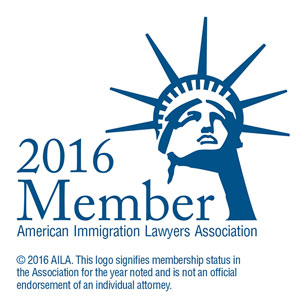The Uncertain Path of the D-3 Waiver for DACA Recipients under Biden’s New Immigration Initiative
By Cyrus D. Mehta and Kaitlyn Box*
On June 18, 2024, the Biden administration announced two new immigration initiatives aimed at keeping families together. The first is a “parole in place” program which will provide a pathway for undocumented spouses of U.S. citizens to become lawful permanent residents (LPRs). In order to be eligible, the noncitizen spouse must have entered the U.S. without admission or parole and hold no immigrant or nonimmigrant status, and “must – as of June 17, 2024 – have resided in the United States for 10 or more years and be legally married to a U.S. citizen, while satisfying all applicable legal requirements.” DHS will evaluate these applications on a case-by-case basis, and will afford approved applicants a three-year period in which to apply for permanent residence.
The other process will enable Deferred Action for Childhood Arrivals (DACA) recipients to more easily obtain employment-based visas. The measure will allow “DACA recipients and other Dreamers, who have earned a degree at an accredited U.S. institution of higher education in the United States, and who have received an offer of employment from a U.S. employer in a field related to their degree, to more quickly receive work visas.” Although many details about this measure are still forthcoming, it appears to involve the expedited issuance of an INA § 212(d)(3) waiver (D-3), which waives many grounds of inadmissibility, including the 3 and 10 year bars that arise from unlawful presence. In a news release corresponding with the Biden administration’s announcement, the U.S. Department of State – Bureau of Consular Affairs stated: “As part of this initiative, the Department will clarify existing guidance to consular officers related to when they should consider recommending that DHS grant a waiver of ineligibility, where applicable… These clarifications will describe when consular officers should consider recommending that the Department of Homeland Security waive ineligibility for these applicants on an expedited basis, in conjunction with visa applications overseas. However, the processing steps will remain the same.” The Foreign Affairs Manual (FAM) will also be updated to “encourage consular officers to consider recommending expedited review of waiver requests in conjunction with certain nonimmigrant visa applications overseas, consistent with existing Department regulations and guidance…This will result in certain individuals to potentially more quickly receive work visas if DHS approves a waiver of ineligibility.”
Although DACA recipients can at present apply for a D-3 waiver in order to obtain an employment-based nonimmigrant visa, this process is rarely used in practice. When a DACA recipient who has been unlawfully present in the United States for a lengthy period of time leaves the United States to apply for an employment-based visa at a U.S. consulate abroad, they are likely to trigger the 3- or 10-year bars pursuant to INA § 212(a)(9)(B).Under INA § 212(a)(9)(B)(i)(I) a person who is unlawfully present for more than 180 days but less than 1 year, and who voluntarily departs the US prior to the commencement of proceeding is inadmissible if they seek admission within 3 years from the date of departure. Under INA § 212(a)(9)(B)(i)(II) a person who has been unlawfully present for more than one year, and who again seeks admission within 10 years from the date of the departure is inadmissible.
Minors do not accrue unlawful presence under INA§ 212(a)(9)(B)(iii)(I), so a DACA recipient who applied for and received DACA before the age of 18.5 years would not trigger the 3- or 10- year bars. Since the grant of DACA stops the accrual of unlawful presence, they would have accrued less than 180 days of unlawful presence. An individual who obtained DACA after the age of 18.5 years and before 19 would trigger only the 3- year bar, having accrued more than 180 days but less than one year of unlawful presence. DACA recipients who obtained the benefit after the age of 19 would have been unlawfully present in the U.S. for a year or more, and would face the 10-year bar. Individuals could enroll in the DACA program up until they reach age 31, and participation in the program was highest among those who were well over 18, so many DACA recipients will unfortunately face the full 10-year bar.
The question of whether or not the waiver will be granted is also a purely discretionary determination made by a consular officer, and the waiver application can take months to be adjudicated. The Foreign Affairs Manual directs consular officers to “consider the following factors, among others, when deciding whether to recommend a waiver: The recency and seriousness of the activity or condition causing the applicant’s ineligibility; The reasons for the proposed travel to the United States; and The positive or negative effect, if any, of the planned travel on U.S. public interests. Whether there is a single, isolated incident or a pattern of misconduct; and Evidence of reformation or rehabilitation.” Thus, DACA recipients, and their prospective employers, currently have little assurance that a D-3 waiver will be granted when they leave the country for consular processing. If the waiver is not granted, the DACA recipient could be stranded outside the U.S. for up to 10 years.
Importantly, an individual can typically only spend a limited amount of time in an employment-based nonimmigrant status – for an H-1B nonimmigrant the maximum is 6 years – so DACA recipients who obtain an employment-based visa such as an H-1B will also need to find a path to remain in the U.S. on a long-term basis, including being sponsored for permanent residence by their employer. Even if the DACA recipient has received the D-3 waiver, this waiver only waives the ground of inadmissibility for the temporary nonimmigrant admission. If the DACA recipient is sponsored for permanent residence, the bars at INA § 212(a)(9)(B) will continue to trigger if the applicant applies for adjustment of status or applies for an immigrant visa overseas. Hence, they will need to wait for 3 or 10 years before they can get admitted as lawful permanent residents. Under USCIS policy, the 3 and 10 year bars can be spent in the US, which we have extensively discussed in a prior blog. The question is how can one wait for 10 years in lawful nonimmigrant status in the US before they can apply for adjustment of status?
Many DACA recipients are natives and citizens of Mexico or South American countries such as Guatemala, Honduras, or El Salvador, so they are likely to be eligible to file an employment-based adjustment of status application much more quickly than a beneficiary from a backlogged country such as India or China. In the June 2024 Visa Bulletin, for example, the Final Action Date for the employment-based third preference category (EB-3) is November 22, 2022 for India and the “rest of world”, but for India it is August 22, 2012. However, §104(c) the American Competitiveness in the Twenty-First Century Act of 2000 (AC21) allows a beneficiary’s H-1B status to be extended for three years at a time if they are the beneficiary of an employment-based I-140 immigrant visa petition, and are eligible to adjust status but for backlogs, caused by per-country limitations, in the employment-based first (EB-1), second (EB-2), or third preference (EB-3) categories. The H-1B status can be extended every three years until the backlogs caused by the per country limitation clears. Because the priority date is likely to become current far more quickly for former DACA recipient not born in India who are the beneficiaries of I-140 petitions, they will be at a disadvantage when it comes to obtaining H-1B extensions beyond the sixth year, as they need to spend 10 years in the US before they can overcome the 212(a)(9)(B) ground of inadmissibility, which could complicate the process of remaining in a valid nonimmigrant status while they wait to apply for adjustment of status. An H-1B worker can also obtain a one year H-1B extension under AC21 §106(a) if at least 365 days have elapsed since the filing of a labor certification with the DOL or an immigrant visa petition with USCIS. See 8 CFR § 214.2(h)(13)(iii)(D). However, noncitizens are precluded from availing of this extension if they do not file for adjustment of status within one year of visa availability. 8 CFR § 214.2(h)(13)(iii)(D)(10). DACA recipients waiting to overcome 212(a)(9)(B) inadmissibility are thus unlikely to benefit from this provision.
Some DACA recipients may opt for the L-1 nonimmigrant path if they spend one year abroad for a subsidiary, parent, or branch of their US employer in a qualifying executive, managerial or specialized knowledge capacity. However, beware, that unlike one in H-1B status who may be able to keep on applying for extensions under AC 21, the shelf life of the L-1A status is 7 years, and 5 years for the L-1B status, as AC21 does not apply to L-1s. One way to get around spending 10 years in the US to overcome 212(a)(9)(B) inadmissibility is if the applicant is eligible for a waiver under INA §212(a)(b)(b)(v), which is based on a showing of extreme hardship to a qualifying relative such as a spouse or parent is a US citizen or lawful permanent resident. If an applicant has such a qualifying relative, they need not wait out the entire 10 years and can waive the ground of inadmissibility.
In conclusion, obtaining the D-3 waiver only allows the DACA recipient who faces the 3 or10 year bar to be admitted into the US as a nonimmigrant. If the DACA recipient needs to obtain permanent residence, they must either wait it out for 3 or 10 years in a nonimmigrant status before they can get admitted as permanent residents, or they need to qualify for a second waiver under INA 212(a)(b)(b)(v). Most DACA recipients may be better off remaining in DACA status rather than exchanging it for H-1B nonimmigrant status. Once they are in H-1B nonimmigrant status, they will have to remain with the employer who sponsored them and will not be able to seek employment in the open market so readily. Of course, the calculus of giving up DACA in exchange for the H-1B nonimmigrant status may change if the Fifth Circuit or Supreme Court deem DACA unlawful, or if President Trump is reelected and yanks DACA. It remains to be seen whether DACA could survive rescission efforts by a future Trump administration. When upholding DACA in 2020 in Department of Homeland Security v. Regents of the University of California, the Supreme Court found that the “reliance interests” of DACA recipients, who have enrolled in college, embarked on careers, started businesses, purchased homes, and married and had children in reliance on the DACA program, must be taken into consideration when deciding the future of the program. This case was discussed at length in a prior blog.
*Kaitlyn Box is a Senior Associate at Cyrus D. Mehta & Partners PLLC.




